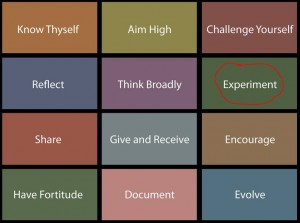 Bewitching Bead & Wire Jewelry: Easy Techniques for 40 Irresistible Projects by Suzanne J.E. Tourtillott
Bewitching Bead & Wire Jewelry: Easy Techniques for 40 Irresistible Projects by Suzanne J.E. Tourtillott
I thought I was off the jewelry book reviewers list, but I received two books last week. Lark was so great about supporting the Boxing Day Sew-in that I just can’t say no to reviewing this book. Like the other books in this series, they have a section on tools and supplies as well as a section on techniques. Both are well illustrated. I particularly like the font and layout chosen in this book. There are a couple of things that are really great in these sections. One is the ‘designer’s tip’, which points out, for example, what wire to chose. I also like the Wire Hardness Scale image (pg.10). It is a good illustration that probably would have taken about a 1,000 words and some hard science like physics to explain. 😉
Some of the illustrations are photographs and others are drawings. The mix is a nice change from other books I have seen. These sections are pretty short and then the author gets right into the projects.
I am not a big fan of wire jewelry for myself because of metal allergies, but I have to admit being tempted by some of the lovely shapes. the very first project, the Red Bone Necklace (pg.18), has a great clasp and I like the beads. The Silver & Moonstone Drops (earrings, pg.20) are beautiful and delicate. They would be great with a creamy summer dress. The Asymmetrical Amethyst Necklace (pg.74) reminds me of my aunt. I think she would like it very much. I also like the Star Swirl Earrings (pg.80). They are cheerful and happy. Who can’t like purple wire?
There are a wide variety of designs, shapes and different jewelry in the book. Some have a lot of wirework. Other projects have wire only to hold the piece together. The author also uses different colors of beads and wire, which adds to the variety of projects.
There is an index (YAY!), a list of designers and more about them as well as a wire gauge chart.
Check it out!
